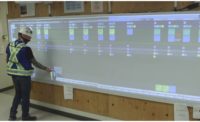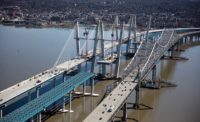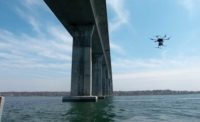The Federal Highway Administration is turning to risk-based, data-driven ways of evaluating and rating bridges. Shay Burrows, team leader for structures safety and management for the FHWA, said that the agency is replacing traditional sufficiency rating numbers with simpler terms such as “good,” “fair,” and “poor” in describing bridges.
Speaking to attendees of the International Bridge Conference last month, he noted the recently issued “Refined Analysis in Bridge Design and Evaluation” manual from the FHWA, which provides guidelines for engineers to use “refined” analysis in modeling bridges.
The manual states: “Current … Bridge Design Specifications feature a reliability-based approach to bridge design…and limit state design with conservatism built in to envelope the limits of applicability and consider all the relevant parameters. Conservatism always adds unnecessary cost, which may have serious implications for owner-agencies with limited budgets.”
Moreover, the manual states that “designers …focus on developing and using complex automated calculation tools to execute the necessary code checks rather than performing meaningful structural modeling to better understand behavior and address the limit states that are being evaluated. This often hides the controlling factors and hinders the development of new bridge innovations in general. A properly and efficiently executed refined analysis can provide substantially better information about the state of stress in a bridge and allow for more cost-effective and reliable design.”
Burrows also cautioned that automated vehicle technology will pose potential new challenges to infrastructure. For example, a fleet of automated trucks traveling close together can cause extra loading on a bridge. “We’re not having these conversations,” he said, referring to the transportation industry. “We need to be.”
He added, “But a smart bridge could signal to the trucks that ‘you’re too heavy for me’ or ‘I’m only 14 feet high.’”
The IBC’s featured agency was the Washington State Dept. of Transportation. Roger Millar, WasDOT’s secretary, said that the state has $6.9 billion in infrastructure preservation needs over the next 10 years, including $1.5 billion in bridge retrofits.
Bijan Khaleghi, WsDOT bridge design engineer, described the agency’s demonstration project of a fully precast bent system with cast-in-place spread footings, using ultra-high-performance concrete. The agency is also testing self-centering precast concrete columns with post-tensioning strands running through them. As a column experiences a lateral load during an earthquake, the PT strand elastically stretches to absorb the seismic energy and returns to its original tension load after the event.





